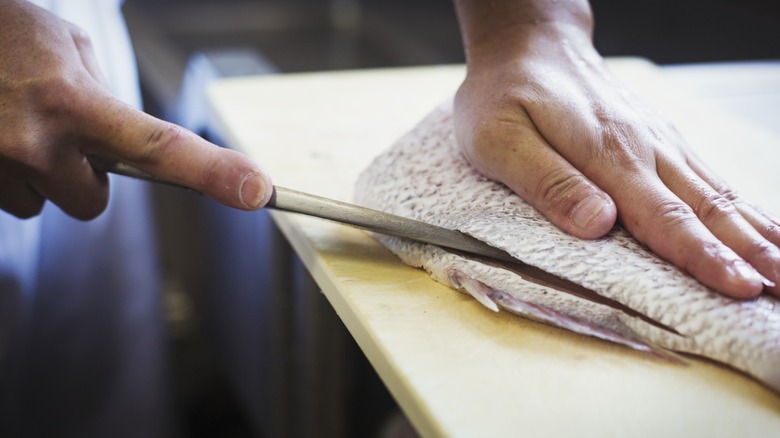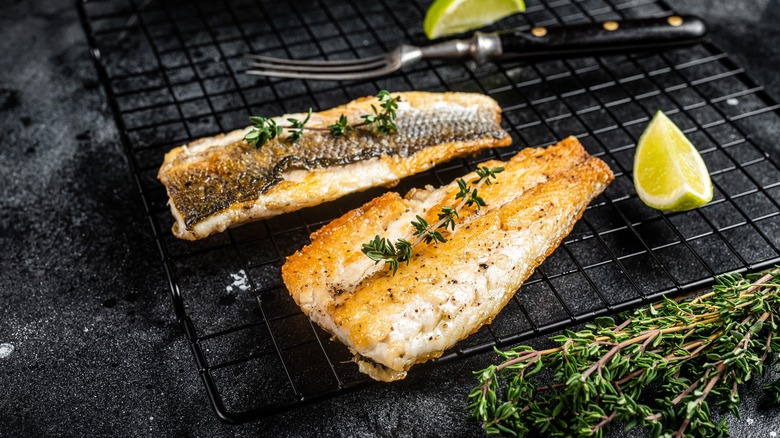The 3 Fish Fillet Cuts You Need To Know About
When it comes to purchasing for and cooking an unforgettable fish dish, there are several mistakes that you should be mindful to avoid. But before your delicate fillet even touches a cooking surface, consider what kind of fillet you're working with. You'd be forgiven for thinking that the term fillet is pretty self-encapsulating -– after all it's just one of a few common ways to cut and serve fish. But it turns out there are three primary and very distinct fillet cuts out there and you would do very well to know what they are and how they differ.
The three cuts of fillet that you're likely to encounter are whole fillet cuts, V-cuts, and J-cuts. Each one has its unique positives and its negatives and can vary in price and availability depending on what kind of fish is being filleted. So when purchasing your fillets to test and serve, make sure you're picking out the type that will best suit your dinner plans.
Each fillet type offers something unique
Strictly speaking, a fillet of fish is just the side of a fish that has had the backbone cut away. With this in mind, the whole fillet cut is essentially the staring ground for fish fillets. A whole fillet is exactly what it sounds like: a cut that has only had the bare necessities removed. This means that you'll be getting a piece with the skin on -– a crucial detail in creating amazing dishes for whole fish and fillets alike. The downside is that the pesky pinbone is still in this cut of fillet. If you want that removed, you can debone fish yourself or simply opt for one of the other fillet cuts.
V-cuts and J-cuts are quite similar to each other. Both have the pinbone removed, which is a boon for you but wastes some meat and comes at a higher price. The biggest difference is that the J-cut removes most of the nape of the fish, a fattier piece of meat located toward the belly of the fish.
There's nothing inherently wrong with the nape, but there's usually a distinct texture and flavor difference here compared to the rest of the fillet. If you wish to avoid that, the J-cut is your best bet, but it'll cost you.This cut is the most sought-after fillet by both home enthusiasts and chefs at high-class restaurants.
Pick the best fillet for the job
You might initially think that a whole fillet cut isn't very useful, since it boils down to one that's had less work done to it. But because this cut retains most of its parts, it can easily become the most versatile. You can of course debone and prep it yourself. You could even make a V-cut or J-cut with it. But a whole fillet also has its uses in larger dishes or in soups, stews, and stocks, where those bones could lend extra flavor and nutrients. When it comes to getting the most bang for your buck, this is the one to go for.
Likewise, if you're given the option between V-cut and J-cut, you'd be forgiven for thinking that a J-cut is preferable every single time. However, since the V-cut retains much more of that fatty nape area, it can be extremely useful when you need an oilier fish, especially if uniform taste and texture is less important (such as in a casserole). You also get more fish than the J-cut and at a lower price.
But when it comes to the creme-de-la-creme of fillets, the J-cut still stands above the others for its uniformity and high-quality flavor and texture. If you seek the perfect grilled fillet, this cut is your ideal option — just make sure it doesn't stick to the grill.


